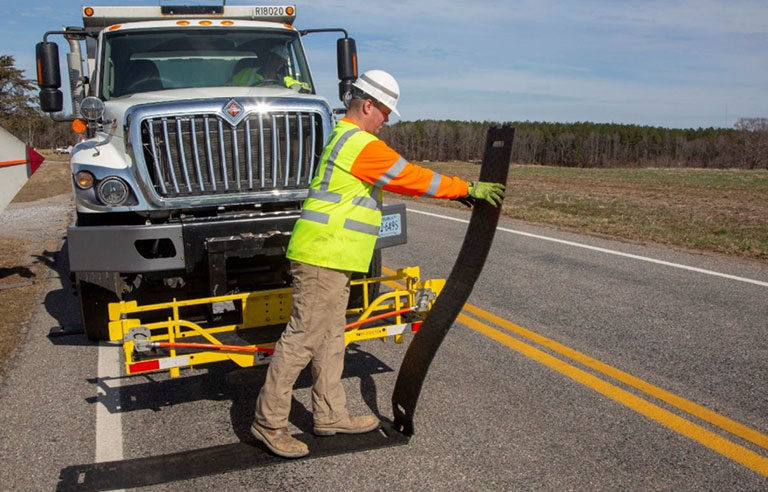Could rumble strips curb distracted driving in work zones?

Washington — Use of temporary, portable rumble strips is more effective than warning signs at reducing distracted driving in work zones, according to a recent National Academy of Sciences, Engineering and Medicine report.
Collaborating with the Alabama Department of Transportation at four different flagging operations along State Route 22 (a rural two-lane road), a team of researchers simultaneously recorded distracted driving data near a “Road Work Ahead” sign and immediately after the placement of the rumble strips.
Similarly, researchers recorded distracted driver data at four different work zones with lane closures on multilane, divided highways in the Texas DOT’s Fort Worth district. Teams were posted near a “Road Work Ahead” sign and then again immediately after a “Watch for Workers When Flashing” sign that featured flashing yellow lights.
| Sign up for Safety+Health's free monthly email newsletters and get the news that's important to you. |
At all eight locations, the researchers looked for drivers looking down, out a side window, at a passenger, in the mirror or using a cellphone.
In Alabama, findings show that the rumble strips “likely did reduce the visual distractions at two of the sites, but not at the other two sites.” Meanwhile, the number of distracted driving instances either stayed the same or increased after the placement of the flashing signage at two of three Texas work zones for which data was determined to be conclusive.
“Transportation agencies and contractors should consider [temporary, portable rumble strips] as a reasonable countermeasure for reducing driver distraction approaching work zones,” the report concludes.
Post a comment to this article
Safety+Health welcomes comments that promote respectful dialogue. Please stay on topic. Comments that contain personal attacks, profanity or abusive language – or those aggressively promoting products or services – will be removed. We reserve the right to determine which comments violate our comment policy. (Anonymous comments are welcome; merely skip the “name” field in the comment box. An email address is required but will not be included with your comment.)

